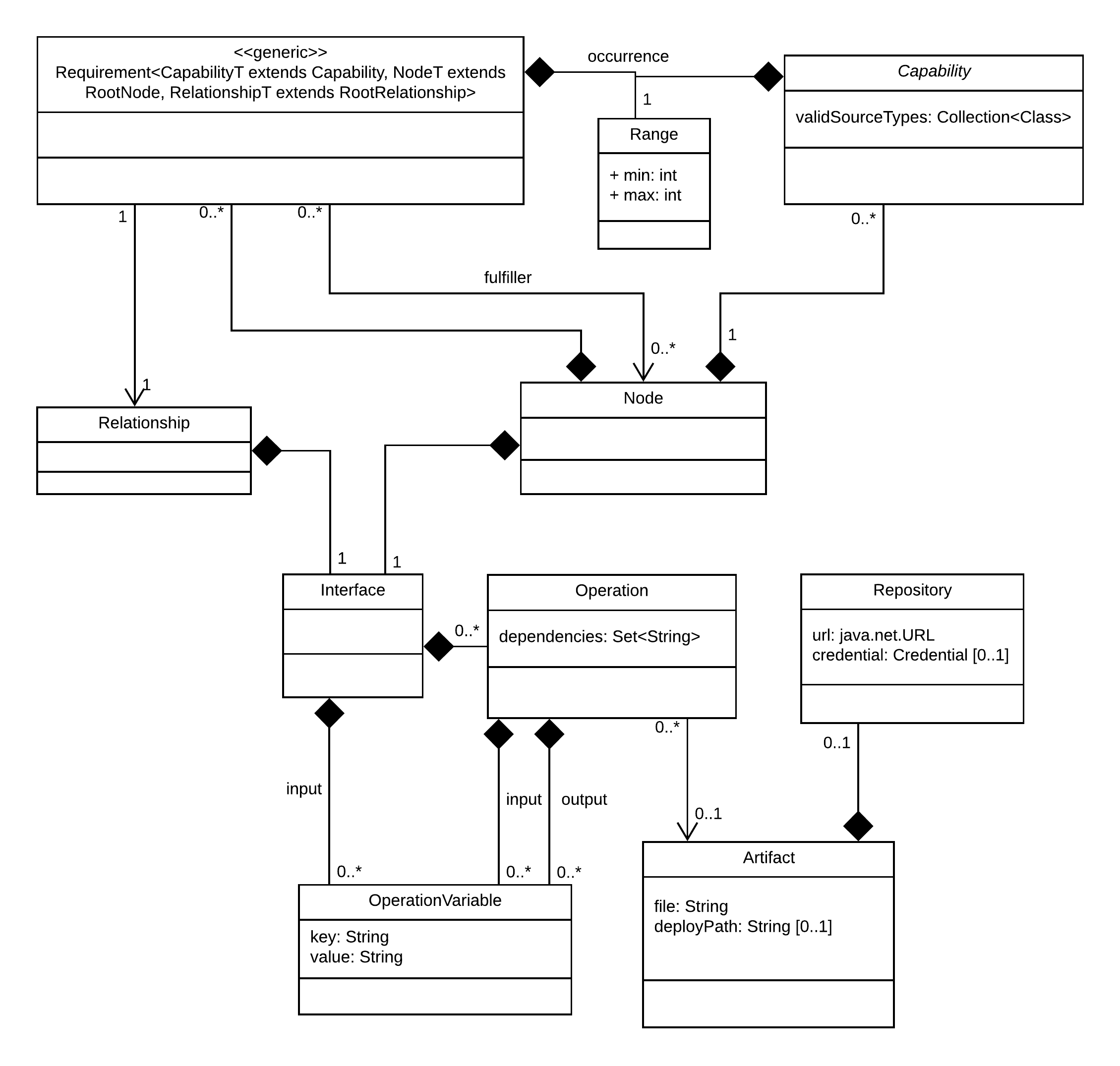EffectiveModel
The TOSCA service template language itself is optimized for convenient modelling. Symbolic links, custom (i.e., non-semantic) type definitions and short notations aim at easing the modeller's life. But from an orchestrator's point of view, these language mechanisms increase the complexity of the template, sometimes even without providing further semantics.
The EffectiveModel component converts a modeler-friendly TOSCA template into a more orchestrator-friendly representation, ready for consumption by a plugin.
Following optimizations aim at easing the plugin developers workload:
- TOSCA's type system is modelled via java classes - TOSCA templates are instances of the type classes
- TOSCA's inheritance is implemented via java inheritance - no need for manual lookup in supertypes
- TOSCA symbolic names are automatically resolved
- TOSCA functions are automatically resolved
- Short and extended notations are unified within the model
- Units of scalar types are handled automatically and served in an unambiguous way
- Data access is granted to be type safe - no guesswork regarding the true type necessary
The term effective is used in the style of the maven project: The relation between Maven's pom and its effective pom is similar to the relation between a TOSCA service template (or the java representation TServiceTemplate from the winery project) and the EffectiveModel.
Obtain an EffectiveModel
Instantiation and basic interaction with an EffectiveModel are shown below.
Note that csar refers to a propper Csar instance:
EffectiveModel model = EffectiveModelFactory.create(csar);
// get above mentioned higher-level graph
Graph<RootNode, RootRelationship> graph = model.getTopology();
// get set of nodes
Set<RootNode> nodes = model.getNodes():
// access inputs of service template
Map<String, InputProperty> inputs = model.getInputs();
// access outputs of service template
Map<String, OutputProperty> outputs = model.getOutputs();
Iterate elements
All TOSCA class instances are visitable, i.e., support getting visited by a matching visitor instance (NodeVisitor, CapabilityVisitor or RelationshipVisitor).
The double dispatch mechanism provided by the visitor pattern solves the problem of accessing arbitrary TOSCA types without writing a myriad of if-statements (if node instanceof..).
Instead, simply extend one of the base visitor classes and implement the needed visit method(s).
If not implemented, the default behaviour of any visit method is a noop.
However, sometimes it might be needed to report an error upon encountering non-implemented methods (e.g., when writing a visitor which shall report an UnsupportedTypeException when visiting any node besides a MysqlDatabase). Therefore, the strict visitor classes StrictNodeVisitor, StrictCapabilityVisitor, StrictRelationshipVisitor) can be used.
Example: Execute action for every node of type Apache
NodeVisitor visitor = new NodeVisitor() {
@Override
public void visit(Apache node) {
doSomething(node);
}
};
model.getNodes().forEach(node -> node.accept(visitor));
Design
General structure

For the sake of clarity, the subclasses of the classes Node, Capability, Relationship and Interface are not shown in above diagram.
However, these subclasses represent the TOSCA type definition. Read more about TOSCA type support.